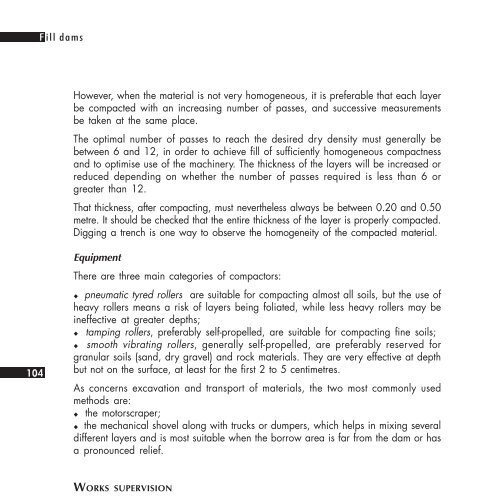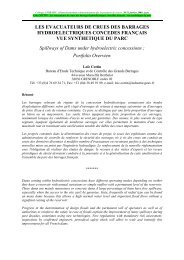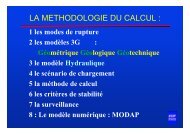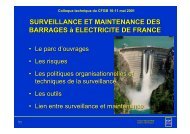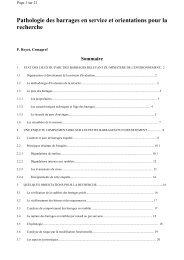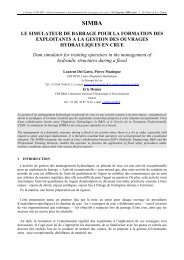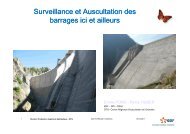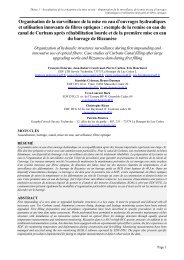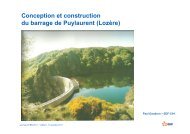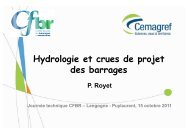SMALL DAMS
SMALL DAMS - Comité Français des Barrages et Réservoirs
SMALL DAMS - Comité Français des Barrages et Réservoirs
- No tags were found...
Create successful ePaper yourself
Turn your PDF publications into a flip-book with our unique Google optimized e-Paper software.
F ill dams<br />
However, when the material is not very homogeneous, it is preferable that each layer<br />
be compacted with an increasing number of passes, and successive measurements<br />
be taken at the same place.<br />
The optimal number of passes to reach the desired dry density must generally be<br />
between 6 and 12, in order to achieve fill of sufficiently homogeneous compactness<br />
and to optimise use of the machinery. The thickness of the layers will be increased or<br />
reduced depending on whether the number of passes required is less than 6 or<br />
greater than 12.<br />
That thickness, after compacting, must nevertheless always be between 0.20 and 0.50<br />
metre. It should be checked that the entire thickness of the layer is properly compacted.<br />
Digging a trench is one way to observe the homogeneity of the compacted material.<br />
104<br />
Equipment<br />
There are three main categories of compactors:<br />
!"pneumatic tyred rollers are suitable for compacting almost all soils, but the use of<br />
heavy rollers means a risk of layers being foliated, while less heavy rollers may be<br />
ineffective at greater depths;<br />
!" tamping rollers, preferably self-propelled, are suitable for compacting fine soils;<br />
!" smooth vibrating rollers, generally self-propelled, are preferably reserved for<br />
granular soils (sand, dry gravel) and rock materials. They are very effective at depth<br />
but not on the surface, at least for the first 2 to 5 centimetres.<br />
As concerns excavation and transport of materials, the two most commonly used<br />
methods are:<br />
!" the motorscraper;<br />
!"the mechanical shovel along with trucks or dumpers, which helps in mixing several<br />
different layers and is most suitable when the borrow area is far from the dam or has<br />
a pronounced relief.<br />
WORKS SUPERVISION<br />
After drawing the conclusions from the test section, the objective is to build, under the<br />
best possible conditions, a structure that will be used for several decades, with the<br />
least possible maintenance.<br />
General philosophy of works supervision<br />
Whatever the quality of the geotechnical studies done on the project, they are always<br />
limited in scope, both as concerns the investigations on the foundation and those in<br />
the borrow areas.<br />
Construction will therefore often reveal situations that were not foreseen during the<br />
studies and to which the works must adapt very quickly.


